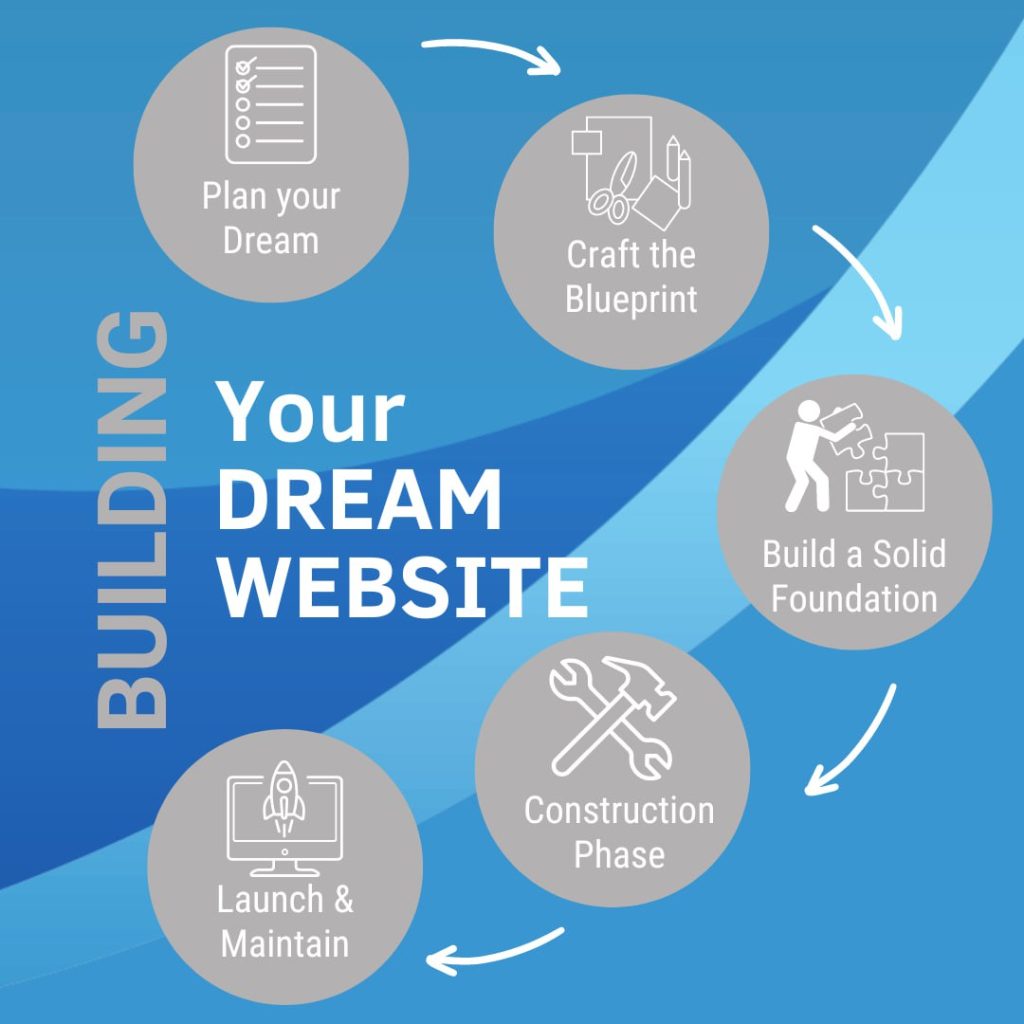Get a stunning, high-performing website that attracts and converts leads. We build custom solutions to elevate your brand online


Website development is a comprehensive process that encompasses the creation, design, coding, and maintenance of websites and web applications.
It involves a mix of programming languages, tools, and frameworks to construct and bring to life a website or web application.
The process not only includes the technical aspects of building a site, such as coding and creating a layout, but also involves content creation and ensuring the functionality of the site or application.
The type of web solution your business requires depends on your specific needs and objectives. Options include:
We start with planning sessions to understand your vision.
Then, we create a blueprint (sitemap & wireframe) to map out the layout and functionalities.
Once we have a solid foundation (domain name & hosting), we move to construction (development phase with regular check-ins).
Finally, you get the keys (website launch)! But just like a home, your website needs ongoing care (maintenance & support) to keep it running smoothly.



At Netcomp, we don’t just build websites, we deliver exceptional experiences through our innovative approach.
We leverage DevOps practices to ensure seamless collaboration, automation, and continuous improvement throughout the development lifecycle.
This means faster project completion, fewer errors, and a website that perfectly aligns with your business goals.
Let us show you the power of DevOps for your next web development project!
This encompasses the creation of websites, from simple informational brochures to complex e-commerce platforms.
The world of web development offers a variety of solutions to fit your specific needs. Here are 3 of the most common types:
Website Development: This is the bread and butter of web development, encompassing everything from simple informational websites to complex e-commerce platforms. It can involve creating:
Static Websites: Think of these as digital brochures, offering basic information about your company, services, and contact details
Dynamic Websites: These are more interactive, allowing users to engage with features like contact forms, appointment scheduling, or even online shopping experiences
Front-End Development: This focuses on the visual aspects and user experience (UX) of a website. Basically, it’s all about what you see and interact with when you visit a website. Front-end developers are the artists and designers who craft the layout, choose the colors and fonts, and ensure smooth navigation. They use languages like HTML, CSS, and JavaScript to make your website visually appealing and user-friendly
Back-End Development: This is the behind-the-scenes magic that makes websites function. Back-end developers work on the server-side, dealing with things like databases, security measures, and ensuring all the website functionalities run smoothly. They use languages like PHP, Python, and Ruby on Rails to build the core functionalities and ensure data is processed and stored securely.
It’s a set of practices that breaks down traditional silos between development and operations teams, fostering collaboration and streamlining the entire web development process. Here are some key benefits of DevOps:
These terms might sound similar, but they have distinct roles in the digital world. Here’s a breakdown to clear things up:
Here’s an analogy: Imagine building a house. Web development is the entire process – planning, construction, and interior design.
The finished house itself would be the web application, offering a specific function or service.
Web development is a broader field, while web programming is a specific skill set within it. Here’s how they differ:
So, web development is the big picture, and web programming is a crucial skill set used within that process.
The ever-evolving world of web development has a vast array of coding languages, but some reign supreme. Here’s a look at the current top contenders:
The specific languages used will depend on the complexity of your website and its functionalities. But understanding these core languages will give you a good grasp of the building blocks of web development.